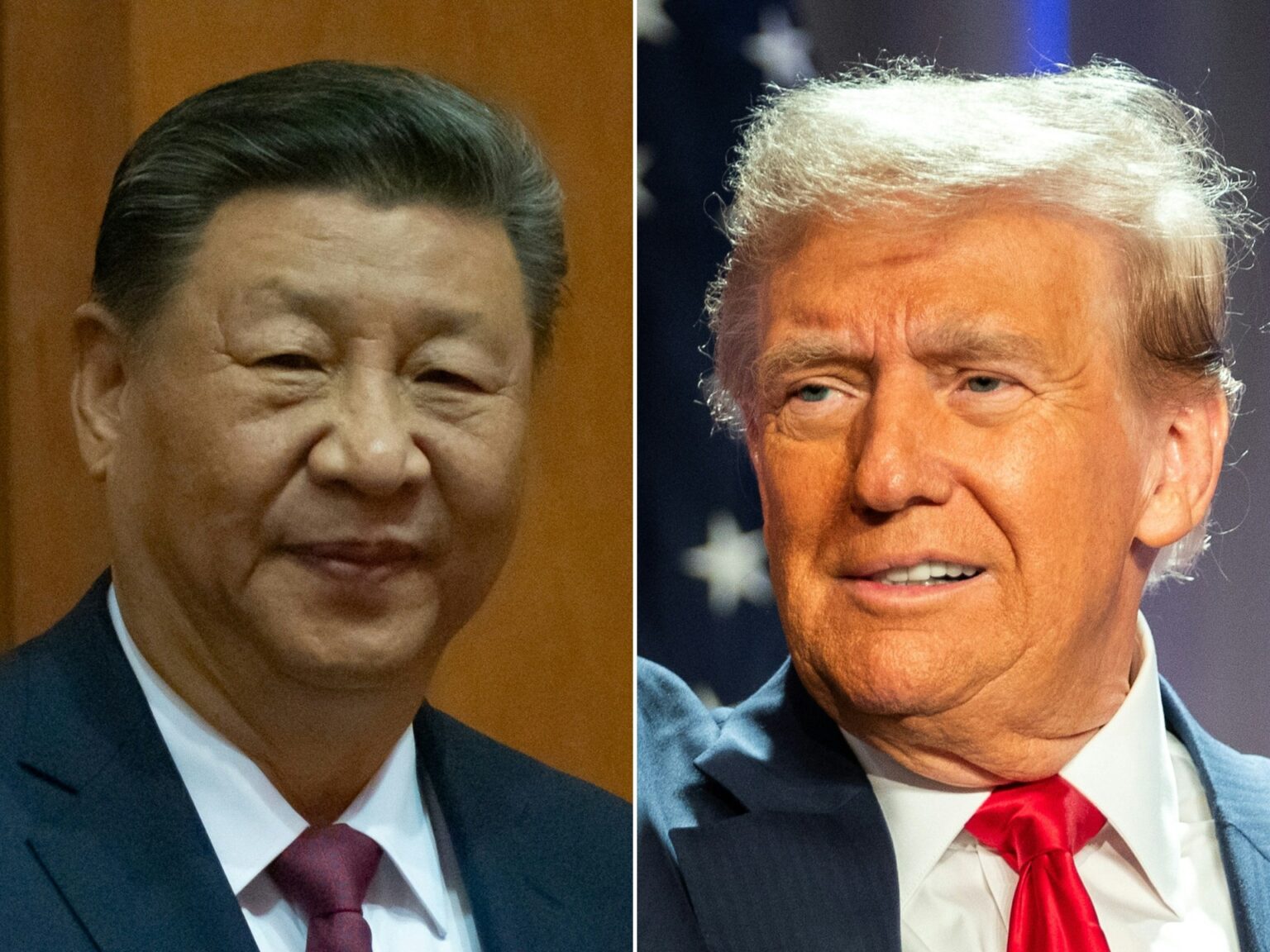China has reacted swiftly to the imposition of 10 percent tariffs on Chinese goods by United States President Donald Trump.
They went into effect at 05:01 GMT on Tuesday, and moments later, China’s Ministry of Finance announced it would impose 15 percent tariffs on imports of US liquid natural gas (LNG) and coal and 10 percent levies on oil, farm equipment and some automobiles.
In addition, China’s Ministry of Commerce and its General Administration of Customs said Beijing will begin imposing export controls on some rare earth minerals and metals central to the booming US tech industry and its green energy industry. China also announced measures against some US businesses.
China set Monday as the start date for its economic countermeasures even though it has already been hit by US tariffs. Trump is expected to speak by phone with Chinese President Xi Jinping this week.
During Trump’s first term as president, China and the US also waged economic warfare in the form of tit-for-tat tariffs that upended the global economy. This time, Trump said he imposed tariffs on China over its role in the flow of fentanyl, a powerful synthetic opioid, into the US.
So what are the implications of China’s tariffs against the US? And what can the example of similar moves by Trump against Mexico and Canada tell us about the potential fallout from China’s rebuttal?
What happened with Canada and Mexico, and how does it apply to China?
On Saturday, the same day that Trump announced tariffs on China, he also declared that the US would impose 25 percent tariffs on goods coming to the US from its two neighbours, Canada and Mexico.
In addition to a charge of ignoring the flow of fentanyl into the US, he also accused the two neighbouring nations of not doing enough to stop undocumented migration to the US over their borders.
Canada and Mexico responded with brusqueness similar to China’s: Mexican President Claudia Sheinbaum immediately ordered retaliatory tariffs while Canadian Prime Minister Justin Trudeau said his country would institute matching 25 percent tariffs on nearly $100bn in US goods.
The rhetoric and threats from the leaders of all three countries escalated until Monday when Trump had calls with both Trudeau and Sheinbaum, after which he announced that he had agreed to a 30-day pause before the tariffs would go into effect.
Trudeau and Sheinbaum, for their part, said they had agreed to enhance efforts to enforce their borders.
Why is China only imposing tariffs from Monday?
As Trump’s call with Xi looms, it appears the Chinese president is giving diplomacy a chance to work as it did in the cases of Canada and Mexico, according to Lynn Song, chief economist for China at the Dutch financial firm ING.
“Delaying the tariff implementation until February 10 will allow for top level leadership to meet before then, which still creates an opportunity for both sides to step back from the brink and de-escalate the situation,” he told Al Jazeera.
But Julien Chaisse, a professor at City University of Hong Kong who specialises in international economic law, said that much will depend on the US and how Trump views China’s decision to threaten retaliatory tariffs.
“If Trump sees this as a direct challenge, his administration could respond with additional trade restrictions. This would intensify the conflict,” he told Al Jazeera.
What has China threatened to do?
If diplomacy fails and China, the world’s largest consumer of energy, follows through on its threats to retaliate, the US will be hit with tariffs on its LNG, coal and crude oil in what Song called a “reasonably measured response”.
China’s antimonopoly regulator also announced investigations into Alphabet’s Google while including PVH Corp, the holding company for brands including Calvin Klein, and biotechnology company Illumina on a list of potential companies that could be targeted with sanctions.
Electric trucks imported from the US will also be hit with a 10 percent tariff, potentially impacting Trump ally Elon Musk’s Tesla, which has been promoting its electric trucks in China.
China’s move to curb the export of critical minerals and metals used in things like electronics, military equipment and solar panels comes at a time when Beijing is strengthening its dominance over the mining and processing of these materials.
The new controls, which came into effect immediately and are not subject to Monday’s deadline, cover the metals tungsten, tellurium, bismuth, indium and molybdenum and their related products.
China’s Commerce Ministry said this measure was to “safeguard national security interests”.
While the controls stop short of an outright ban, exports are likely to drop sharply as companies scramble to get export licences, a process that takes roughly six weeks. It’s not clear whether US importers will qualify for licences.
“It is a response with equal magnitude but in a different way than in 2018,” Gary Ng, a senior economist with the investment bank Natixis in Hong Kong, told Al Jazeera, referring to the tariff war the two countries engaged in during Trump’s 2017-2021 first term.
“This time, it is a mix of tariffs on targeted products, export control and restrictions on market access. It means China is using its role as one of the world’s largest markets and producers to bargain with the US.”
What is the potential fallout of China’s response?
China’s moves against US imports target a relatively small percentage of the total goods it brings in from the US, Song said, adding that ING’s initial calculations put this number at 10 to 12 percent based on 2024 data.
The US is a relatively small source of crude oil for China, accounting for 1.7 percent of its imports last year and worth about $6bn. It imported an average of 230,540 barrels per day from the US in 2024, a 52 percent decline from the same period in 2023.
About 5.4 percent of China’s LNG imports come from the US, totalling 4.16 million tonnes last year and worth $2.41bn, customs data showed. China bought about 10 percent of US LNG exports last year.
These LNG purchases, however, are nearly double what they were in 2018, the last time the US and China went toe to toe in a trade war.
The US is not a major source of coal for China. Only 6.4 percent of US coal production goes to China, US export data showed.

The materials Beijing has put export restrictions on have the potential to hit the US harder.
Tungsten is used in the production of things such as artillery shells, armour plating and cutting tools because of its extreme hardness.
About 60 percent of tungsten consumed by the US goes towards tungsten carbide, used in construction, metalworking, and oil and gas drilling. China produced roughly 80 percent of the global supply in 2023.
Also on this list are indium, critical in the production of phone and TV screens, and tellurium, bismuth and molybdenum, essential to things like metalworking.
China is one of the world’s leading producers of all of these materials, setting the US tech and clean energy sectors up for pain.
Read the full article here


